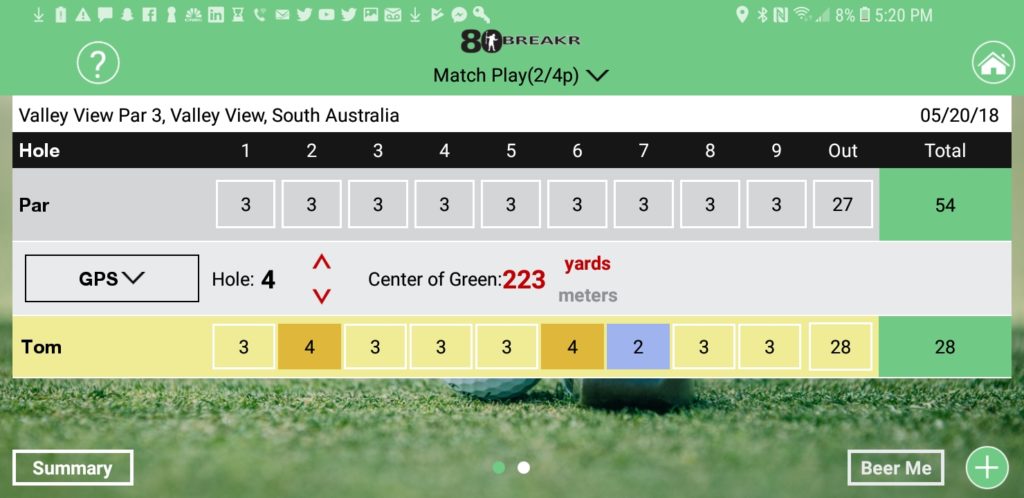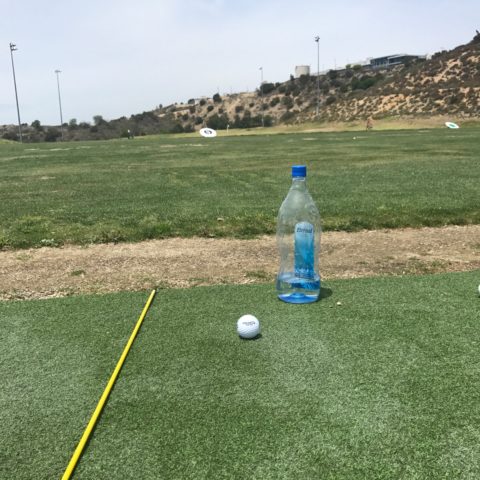No golfer really wants to say the word “shank”. It’s as if by uttering the word, it will sneak into your golf game. I was surprised to find out that PGA and LPGA golfers have it happen once in a while. PGA.com put together a nice summary with photos and videos of the top 13 PGA pro shanks for 2016.
I’ve been working on my short-game the last few months when I can squeeze in a few holes around my schedule, and was getting a lot better. I started to notice every once in a while, I’d have a mis-hit. Sometimes a true “off the hosel” shank. Other times I’d blade it across the green, or have some other golf-novice looking shot with my irons. I realized there were shots when I’d mysteriously not watch the ball, then hear the inevitable “keep your head down” useless comment from someone you’re golfing with. I thought this would be easy, now that I recognized the problem. I’ll simply keep my head down, glued to the ball so-to-speak, and the problem would be solved. Nope. I approached it like it was an addiction, and was going to count the days between not watching the ball through impact. Right away, I found out there was nothing to count. I could barely go a few holes without slipping in the mis-hit, which sometimes was a shank. I started counting holes where my attention drifted during the 1/3 of a second of my down swing. Here’s an article that talks about pro and amateur golfer downswing times.
Talk about attention deficit disorder! I couldn’t keep my attention on the golf ball for about 1/3 of a second? I’d score fine for a couple of holes, then facing an easy pitch shot, and here comes the mis-hit (or shank). Next thing I knew, I’m staring at a 6 foot putt for double-bogey. I went to Torrey Pines and decided to count how many times I mis-hit the ball for 18 holes. This was a few weeks ago, I counted 10 times I mis-hit the ball. Every single one wasted at least one shot. See my scorecard below. I would have had a very interesting score if I could have eliminated most of those 10 strokes.
I have a couple of colleagues that are golf professionals here at 80BREAKR™. I asked them about shanks & what to do about them. Here is their take on shanks.
“Primary cause of a shank- when the Players club path works from an inside to out position. In order to fix this problem, over compensate with an outside to in swing thought. Use an object such as a tee, water bottle, etc out in front of your ball as a visual aid. This will help you swing the club more “inside to out” creating the correct swing path. Hit the ball, and avoid the bottle! If your club is going out toward the bottle, the shank is coming into play. We want the club to exit left always!”
– Natalie Schmett, PGA Golf Instructor, Black Golf Golf Clb, Yorba Linda CA.
“The dreaded shank: most golfers even cringe at the faintest whisper of the word. A resounding “thwack” coupled with a shockwave up the shaft leaves even the most seasoned golfer shaking their head. Despite the ball shooting off to the right, the cause of a shank can usually be attributed to a closed clubface. Without a full turn into the backswing with the hips and torso, it tends to be a quicker, shorter swing lead by the hands. To combat this, thinking of making a full hip AND shoulder turn on the backswing (as opposed to all arms) will allow the golfer to create the space needed for the club to clear on the downswing without the feared hosel-rocket.”
– Derek Loebbecke (TPI Certified Fitness Instructor)
I read several articles on shanks & mis-hits. Here at Golf Monthly they have four tips to stop shanks.
This is an interesting article I like on shanks by A.J. Bonar, PGA. Breaks it down as “It’s just a heeled shot with an iron.” He talks about some common ideas about setup & balance, but the most interesting idea is that golf has an important difference for eye-hand coordination than tennis or baseball. With a tennis racket or a baseball bat, the “sweet spot” is simply a direct line extension from your hand. So if you have really good eye-hand coordination, it can feel natural to try to hit it as a direct extension of your hand. But for golf, that direct-line extension is the hosel, & a shank ensues. The sweet spot on a golf iron is about 2 inches forward of that line from your hand. He has a couple of great ideas to help.
John Carney, former NFL star for San Diego & New Orleans, created a golf app that helps keep your head down. This was intriguing to me, because I believe that’s at the heart of my issues. You put your iPhone on the ground with the ball between you and the iPhone about 4 – 6 inches. You hit the ball normally, but after impact, keep an eye on the screen to see a color or shape. It’s a way to practice keeping your head down through impact. I tried it a little bit yesterday, but will try more in the coming days. After the image goes away, if you didn’t keep your head down, you won’t know what color or shape was displayed, so it shows it to you again a few seconds later so you will know if you kept your head down.
Here’s a quick demo with lag putts with my putter. I couldn’t get it to work for short putts, but I may not yet know how to use it properly.
What’s the take-away from all this info on shanks? Apparently there are many different ways you can create a mis-hit or shank with your irons. It’s simply a heeled shot. It’s also possible to have a combination of issues like “crowding the ball” at setup, poor balance, AND not watching the ball through impact. I worked on this every time I hit a few balls or played a few holes of golf in my community par 3. I’m pleased to say after a month of working on it after those 10 mis-hits, I had my first successful 9 holes without a mis-hit.

I stopped the shanks, can I keep them away? (Ok, I didn’t play in Australia, my community course isn’t recognized as certified by the USGA, so I wing it)
Now the trick is to try to keep those shanks in the past. Amateurs and pros alike can hit it off the heel. I guess “shank” doesn’t need to be a 4-letter word, those usually come automatically after you hit one.



